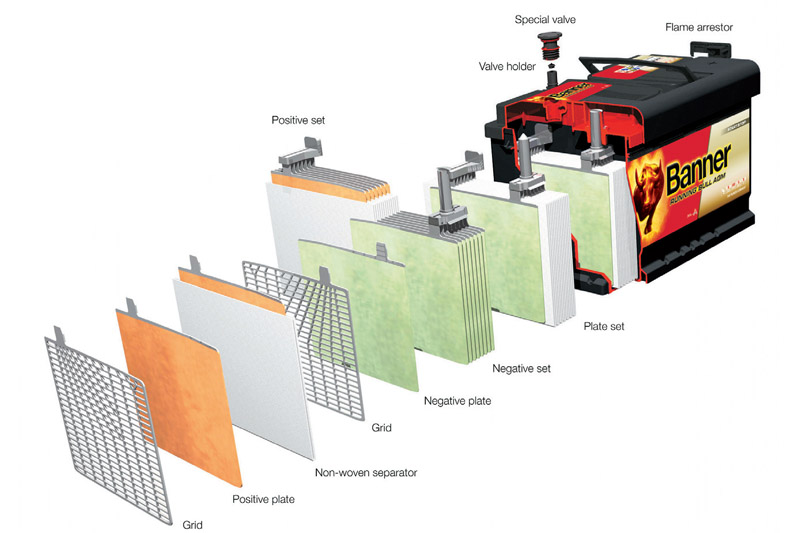
Despite the focus on engines when it comes to air quality, the humble battery remains an integral component in the fight against emissions. Russel Shea, Business Development Manager at Banner Batteries, explains.
The phrase ‘beauty is only skin deep’, is usually associated with how a person’s character is far more important than how they look. However, it also has its place in the field of automotive parts, nowhere being more important than the car battery. Why? Because this essential component is far more than it ever used to be. It is not just a means of providing starting power, but so much more.
So, let us consider exactly how much power a modern car requires and, to make this more compelling, compare it to that of a typical three-bedroom semi-detached family home. The figures are quite simply staggering; the power consumption on the domestic front is approximately 10,000W per day, and the car is not far behind, with a daily usage of 6,500W. And if you find this hard to believe, Fig 1 demonstrates the plethora of onboard features that the humble battery is required to power – 31 in this instance!

Demand for delivering more power has therefore resulted in manufacturers developing the current generation of starter batteries that continue to lead the field – EFB (Enhanced Flooded Battery) and AGM (Absorbent Glass Mat) or Valve Regulated Lead Acid (VRLA) batteries. However, despite having been in existence for several years, there is still some confusion about AGM and EFB batteries in terms of the role that they play and what needs to happen when they are replaced.
Legislation drivers
These battery technologies are here to stay, not just because of their ability to deliver power above and beyond – the eco-initiatives that governments are implementing to meet EU legislation makes them essential.
The current EU legislation on emissions targets was passed in 2009, and saw vehicle manufacturers commit to cutting average CO2 emissions from new vehicles to 130g/km by 2015 and 95g/km by 2020. Legislation discussions have stated figures of up to 250€/gram of CO2/km may be charged based on the manufacturer’s average fleet emissions, which exceeds the legislative level for the time period between emission reduction targets. This charge will be applied to every vehicle sold by that manufacturer.
It is against this backdrop that OE battery manufacturers continue to work closely with vehicle producers to deliver power solutions that not only exceed automotive power output requirements, but also adhere to emissions targets. In order to deliver on these two fronts, the focus remains on OE battery manufacturers to produce a solution that is designed to exceed a normal life expectancy – this means using only components of the highest quality.
Advanced eco-initiatives
OE-manufactured batteries of the EFB and AGM type are proven to perform well both within the car and with regards to the environment. Now, with more eco-initiatives mushrooming to help drivers save fuel and reduce vehicle CO2 emissions, the importance of deploying battery technology of the highest quality is set to remain of prime importance.
Recent eco-initiatives centre around tyre pressure monitoring systems (TPMS), low rolling resistance tyres, gearshift indicators, and new radical technologies that include electronic camshafts and electronic valve timing systems that allow the engine tune to be optimised to driving style.
Whilst these latest technologies may be some way off from impacting the automotive aftermarket, AGM and EFB batteries are here to stay. It is therefore wise to start adopting a philosophy of stocking and recommending a battery solution where you know the real beauty lies beneath the surface.









